|
Highlights of Huangshan
(Yellow Mountains)
April 6, 2000. We leave Tunxi (Huangshan Shi) with our guide, George,
for a three hour drive to the southern part of the Anhui province and our
destination, Huangshan (Yellow Mountains). 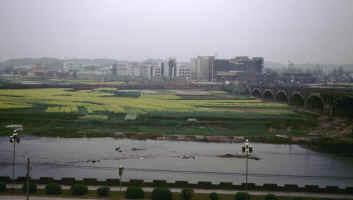
The drive to the backside of
the Yellow Mountains takes us through the most beautiful countryside that we
have seen in China dotted with traditional villages and patchwork of
fields. The farms are neat, wood is stacked orderly and pork loins and
field greens are hung out to dry in the sun. The fields filled with both bright
yellow rape plants used for making cooking oil abut the traditional rice
paddies. Here farmers still use water buffalos to plow the
paddies.
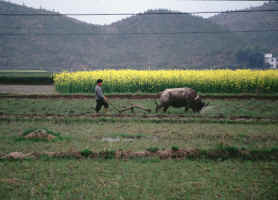 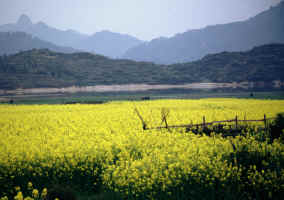
As we moved further west and gain altitude, tea plants
become visible. Villagers are harvesting the tea and sending it on to be dried
and cleaned.
The next district we entered is not as prosperous but still it is
more livable then the northern cities that we had visited. Here also the air
quality was so much better then we had experienced elsewhere in
China.
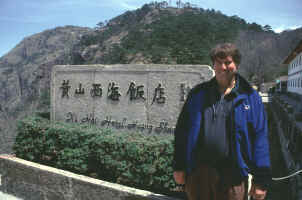 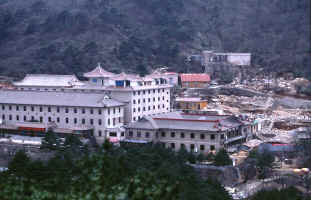
We arrive at the Taiping Cable Car and ride to the top of
"cloud dispersing" area. It takes 10 minutes to walk to the
Xihai Hotel. Although the accommodations are not deluxe, it is like a
Holiday Inn, utilitarian. Also on top are three other hotels with two more
under construction. For such a sacred spot in the past, it is very
commercialized including large Korean and Japanese tour groups (suits and
leather dress shoes climbing around on the mountain - an interesting
combination).
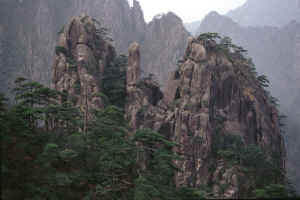
Paved trails wind around the lookout points of the
Huangshan summit area. Here is where many Chinese have inked beautiful
drawings of the landscapes of craggy rocks, low hanging clouds, gnarled pines
which have made this area so recognized. We are fortunate to see the mountain
top on a sunny day so that we can fully appreciate the vistas, the signature
mountain shapes and the foliage.
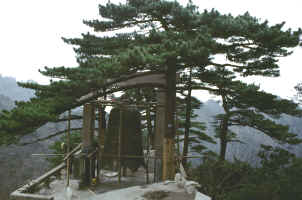 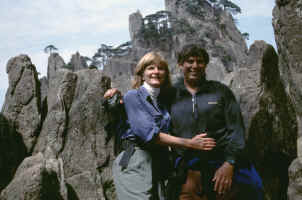
April 7. We get an early start on
our hike down the mountain. George, our guide who carried only a tooth brush and
empty portfolio up the mountain, was very concerned that we would be
unable to hike with our loaded day packs. We were required to hike to Bright
Summit and Lotus Flower Peak (1864 m) prior to our descent which was a bit
of a challenge but we succeeded in leaving George in the dust.
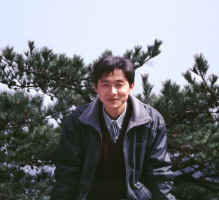 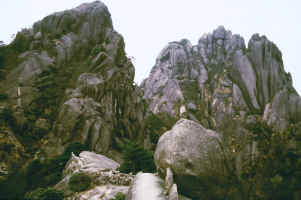
The rock
formations on the western steps were enchanting. Some of the stairs are very
steep, uneven rise and extremely narrow. The path treads through two rock
crevices. In the midst of these narrow steep stairs, a group of tourists were
engaging in a heated argument over the fee for a porter to transport them across
the summit. Looks safer to me to walk rather than ride in one of the rope
and bamboo contraptions offered by the locals.
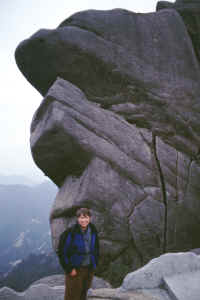 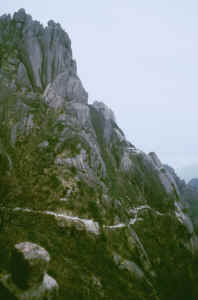
That said
everything on the mountain is delivered by humans, all food supplies, building
materials, people, baggage, furnishings. Porters have assisted in the
construction of the cable car stations and towers - old wooden walkways still
exist below the cable cars where the workers carried supplies up
originally. The porter trails today look like something out of
Disneyland winding around a giant mountain to the Magic Kingdom atop.
Slits between the rocks become openings for these walkways with delicate bridges
tethering the black rocks with what looks like a fragile ribbon. 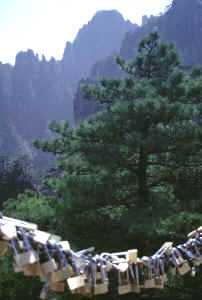
One
of the mountain customs is the number of locks engraved with lovers' names that
have been accumulated on the mountain railings, symbolizing the
"locked" nature of the relationship. This is especially visible on the
western slopes near Heavenly Capital Peak.
We descent under the Jade Screen
Cable Car into the Hot Springs Area. Although we do not take advantage of
the hot spring baths, we do stop for lunch at the Peach Blossom Hotel (Taoyuan).
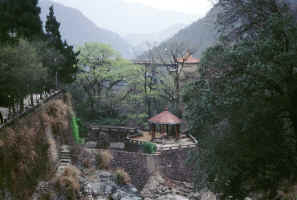
After
lunch we climb into our car for a two hour drive to a 150 year old village, Hai
Zhong, in which about 300 families live in this city built by a wealthy business
man of the time "Wang". His home has beautiful wood carvings of old
opera stories. We have an alien permit to go to this town since we are
said to cross some major military installation along the way.
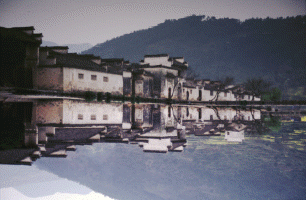 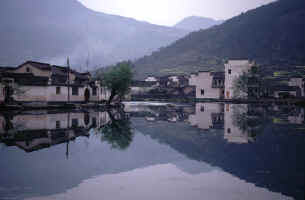
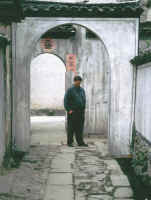 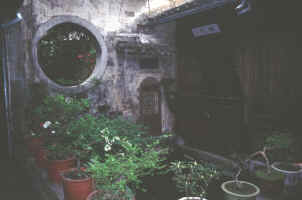
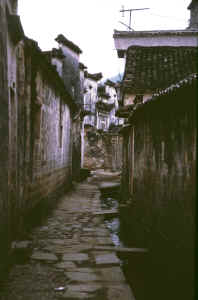 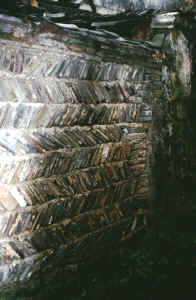
We
continue our descent into tea country and then down to the rice paddies of the
lower lands. We return for another night in Tunxi and then fly to Shanghai
the
next morning.
|